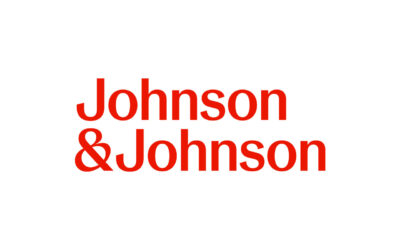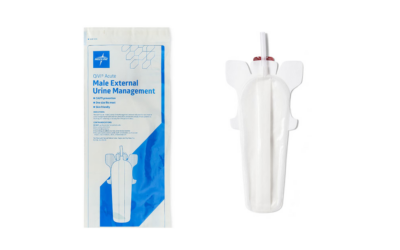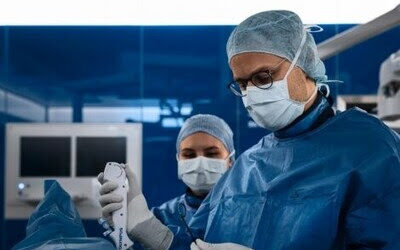This year’s election campaigns are quickly fading into history, but many of the questions the candidates raised about the most effective ways to cut the cost of health care in the US while improving the quality of that care remain unanswered. As that controversy continues, the Ambulatory Surgery Center Association (ASCA) is recommending that Medicare make one small change in its ASC payment system that would immediately move the US health care system one step closer to its ultimate goal of improving patient access to affordable, high-quality care.
The change ASCA is endorsing — a change in the definition of the term device intensive procedure as it applies to ASCs — would start to save Medicare and its beneficiaries money today by encouraging the migration of surgical procedures that involve the use of high-cost implantable devices from hospital outpatient departments (HOPD) to the lower cost ASC setting. Precedent for that change has been set in the payment policies Medicare already applies to hospitals.
Currently, ASCs regularly perform 66 procedures that Medicare considers to be device-intensive procedures, or procedures for which the cost of the device represents 50% of the reimbursed amount to perform the procedure in the HOPD. There are, however, approximately 270 additional procedures that could qualify as device-intensive procedures if a slightly modified definition for that term were adopted. The definition that ASCA is proposing is “procedures for which the cost of the device represents 50% of the reimbursed amount to perform the procedure in the ASC.”
CMS has already agreed to reimburse ASCs for performing all of the approximately 270 procedures that would be affected, but few ASCs actually perform these procedures today because the formula CMS uses to determine the ASCs’ reimbursement rates for them fail to adequately accommodate the costs the ASCs incur. Let’s look at the numbers.
When CMS designates a procedure as device-intensive, Medicare pays HOPDs and ASCs that perform that procedure the full amount for the device plus an additional amount for the services the HOPDs and ASCs provide. As an example, let’s assume that a hospital is paid $100 for a procedure that involves a device that costs $50. Because the cost of the device equals at least 50 percent of the cost of the procedure in the hospital, the procedure would be considered device intensive. Therefore, the $100 hospital payment for the procedure would be made up of $50 for the device and $50 for the services the hospital provides.
An ASC that performs the same procedure would also receive the full $50 payment for the device plus an additional amount for the services the ASC provides. Since ASCs are reimbursed at an average of 58 percent of the HOPD rates, however, the payment to the ASC for the services it provides in this case would be $29 (.58 x $50), not the $50 that the hospital receives. Therefore, the ASC would get paid a total of $79 [$50 + (.58 x $50)] to perform this procedure. In this case, the ASC payment is reasonable because it covers the cost of the device and makes it feasible for the ASC to perform the procedure. Medicare and its beneficiaries save money when the case is performed in the ASC where the procedure costs $79 instead of the HOPD where the procedure would cost $100.
Now, let’s assume that a hospital is paid $100 for a procedure in which the device costs $40. In this case, the procedure is not classified as deviceintensive, and an ASC would be paid just $58 (58 percent of $100) for this case even though the cost of the
device makes up 70 percent of that payment. In this case, it is not economically feasible for an ASC to perform the procedure, and patients have no choice but to seek care in the more expensive HOPD setting.
ASCA is recommending that CMS redefine device-intensive procedures in ASCs based on what an ASC is paid, and not what a hospital is paid, to perform the procedure. In the example above, where the device costs $40, the procedure would be considered device-intensive in the ASC setting because the price of the device is more than 50 percent of $58—the amount the ASC would be paid for performing the procedure. If the procedure were to be considered device-intensive, the ASC would get paid $74.80 [$40 + (.58 x $60—the service portion of the hospital payment for the procedure)] for that procedure. Medicare would still save money by paying $74.80 for the procedure performed in the ASC rather than $100 for the procedure performed in an HOPD.
In 2010, about 150,000 of the approximately 270 procedures that would be reclassified as device-intensive in the ASC setting if the new definition were adopted were performed in the ASC setting. Meanwhile, more than 1.5 million of those procedures were done in the HOPD setting at a higher cost to the Medicare program. By paying ASCs a reasonable amount for these procedures, Medicare could realize substantial savings as these procedures move to the less costly ASC setting. Taxpayers, the federal government and patients all would share in the savings.
William Prentice is the chief executive officer of the Ambulatory Surgery Center Association.
For more information about the association, call (703)836-8808 or go to www.ascassociation.org.









